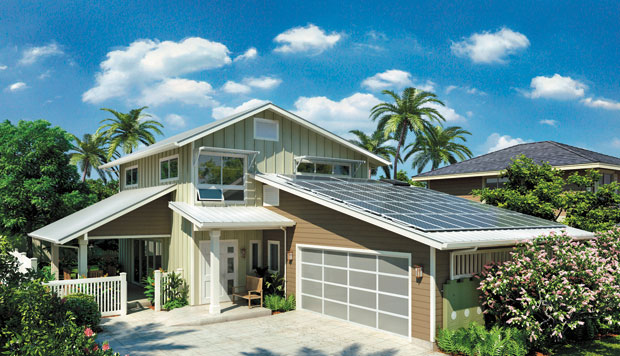Increasing housing supply in Hawaii
As we begin to confront our need to increase the supply of housing across the state, the traditional development models of master-planned communities are being reassessed for a number of reasons. Primarily, the counties have adopted “urban growth boundaries” as a means of containing the urban sprawl from converting more agricultural lands. In addition, the cost, in both time and money, for families to commute from home to work and school is going to continue to increase over time.
In Honolulu, we have an opportunity to change the urban landscape as the transit project is being developed. Transit appears to be a sensible way of moving people from where they live to where they work or play; however, in reality, transit is essentially a growth management tool. In other cities, the transit alignment was used to plan for where future growth was to occur. Growth, or density, is then concentrated in areas around the transit stations, as people use the transit as their principle mode of travel.

How would you create opportunities for developers to build more housing at all price points? One way would be to integrate infrastructure-capacity building in conjunction with the development of the transit corridor to provide the necessary infrastructure capacity to support the higher density or growth. Once the infrastructure capacity is provided, the density can be allocated in a manner that will allow the private sector to consolidate and bundle small individual parcels into larger parcels. For example, the city could “incentivize” developers to acquire or joint develop existing parcels into larger parcels by providing zoning within a certain radius of the transit station, on a first come, first serve basis. This allows the market to respond and takes government out of the role of identifying which properties get up-zoned. You then create an environment where small, medium and large developers have an opportunity to provide more mixed-use projects where families can live, work and play. Competition usually results in a better product for the consumer.
Developing urban in-fill projects requires foresight and an investment in infrastructure to accommodate future growth. We understand that steps are underway to increase the capacity of the Sand Island Waste Water Treatment facility with the planned construction of the second digester. We hope that similar attention is being paid to increase the capacity of the collection systems in and around the transit stations. Similar efforts are required to ensure there is an adequate potable water system to support the planned growth (i.e. source, transmission and storage).
With our severe housing shortage, there is an opportunity for government to plan for where growth should occur, and then allow the private sector to respond to the market demand for housing. It is a delicate balance that we all need to realize, then work towards a solution together.
Karen Nakamura is CEO of the Building Industry Association of Hawaii.